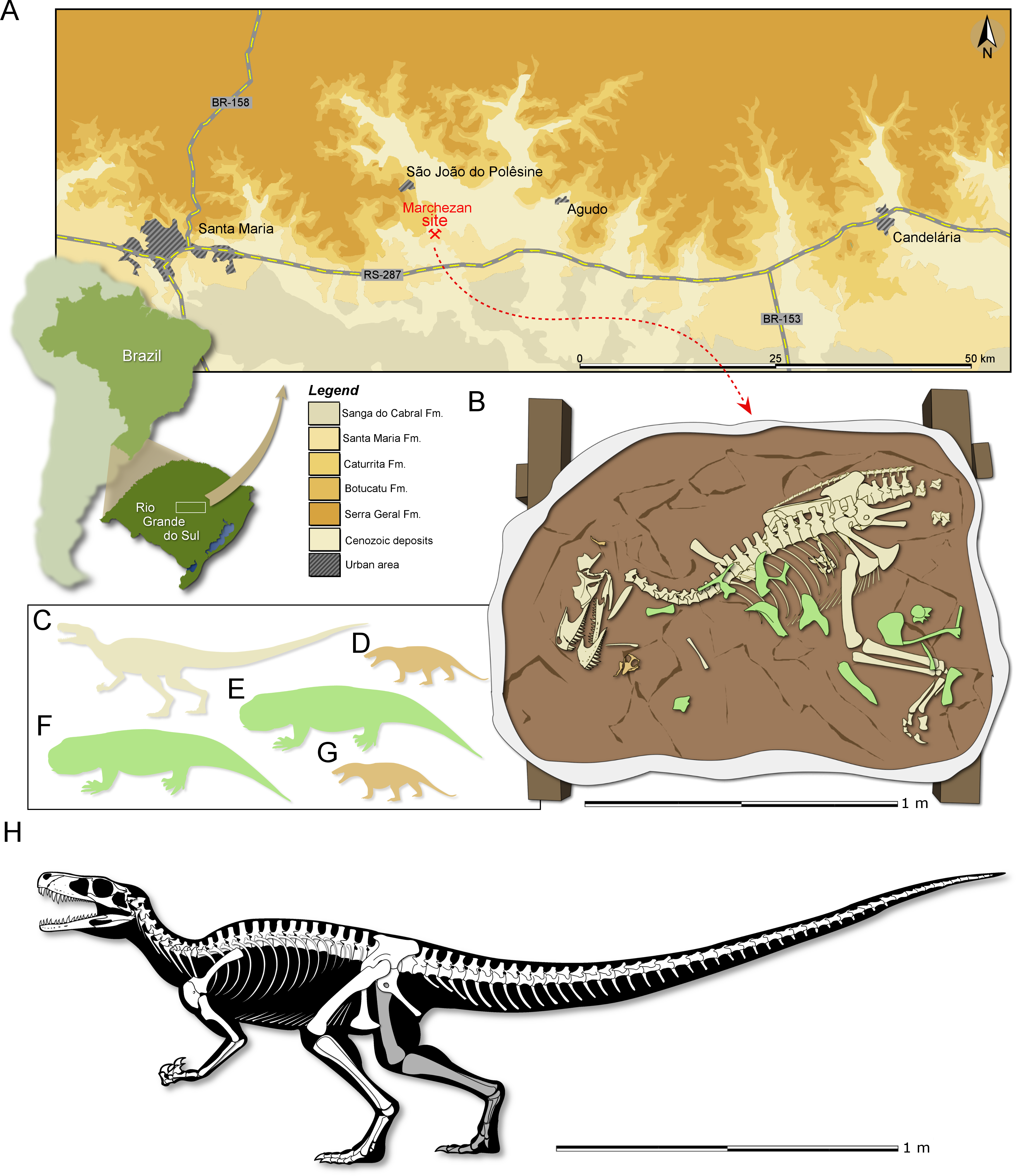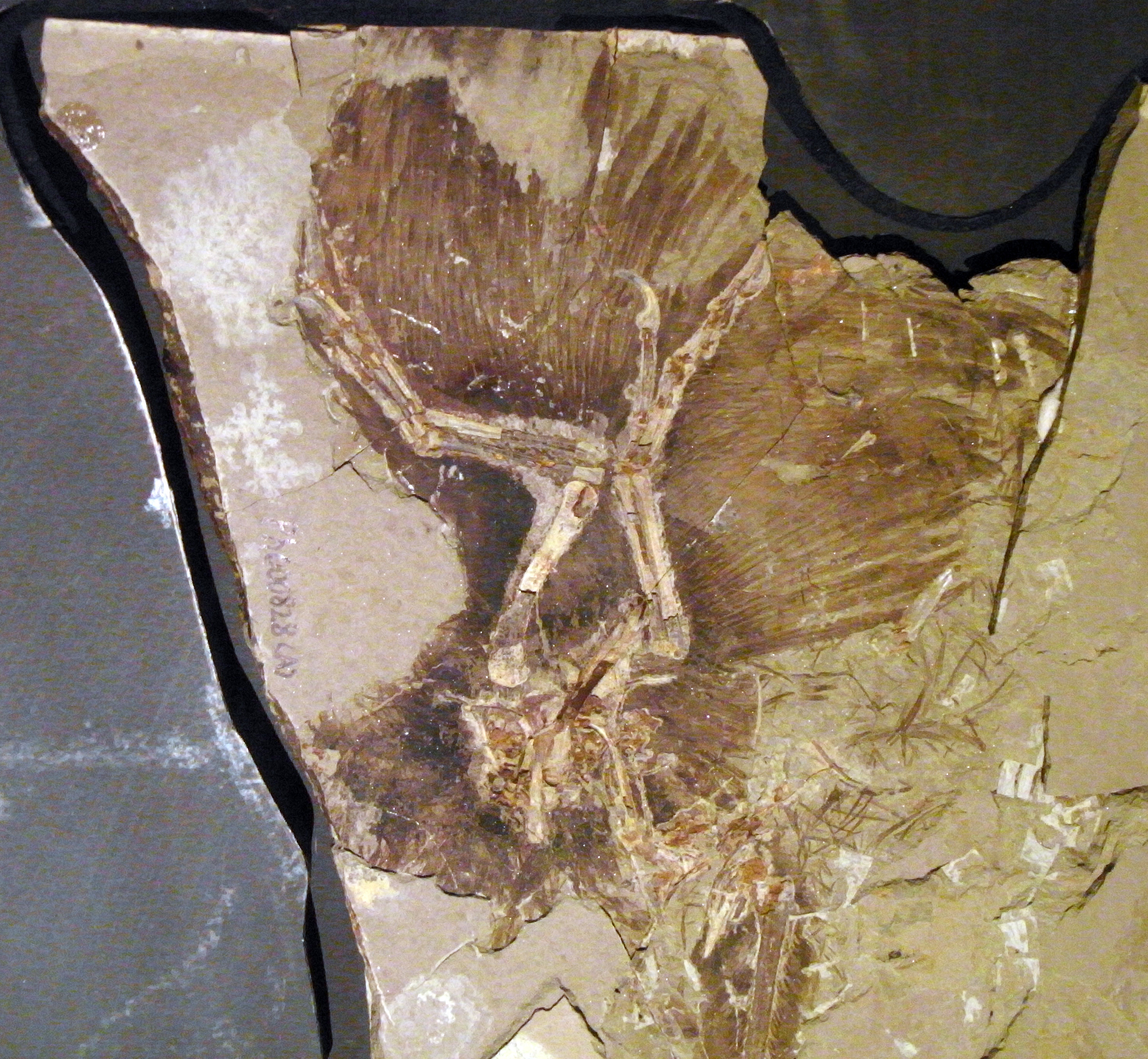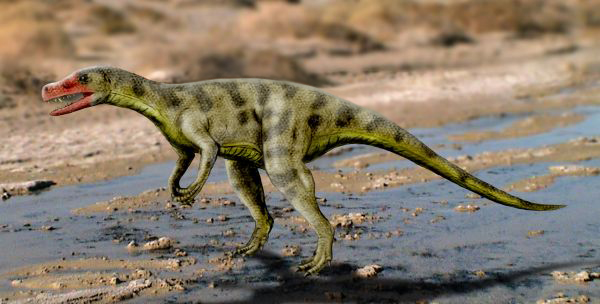|
Herrerasaurids
Herrerasauridae is a Family (biology), family of carnivore, carnivorous dinosaurs, possibly basal (phylogenetics), basal to either theropods or even all of saurischians, or even their own branching from dracohors, separate from dinosauria altogether. They are among the oldest known dinosaurs, first appearing in the fossil record around 233.23 million years ago (the Carnian stage of the Late Triassic), before becoming extinct by the end of the Carnian stage. Herrerasaurids were relatively small-sized dinosaurs, normally no more than long, although the holotype specimen of "''Frenguellisaurus ischigualastensis"'' (nowadays considered a synonym of ''Herrerasaurus'' ''ischigualastensis'') is thought to have reached around 6 meters (20 ft) long. The best known representatives of this group are from South America (Brazil, Argentina), where they were first discovered in the 1930s in relation to ''Staurikosaurus'' and 1960s in relation to ''Herrerasaurus''. A nearly complete skeleton of ... [...More Info...] [...Related Items...] OR: [Wikipedia] [Google] [Baidu] |
Gnathovorax
''Gnathovorax'' is a genus of herrerasaurid saurischian dinosaur from the Santa Maria Formation in Rio Grande do Sul, Brazil. The type and only species is ''Gnathovorax cabreirai'', described by Pacheco ''et al.'' in 2019. The type specimen comprises a mostly complete and well-preserved articulated skeleton (considered one of the best herrerasaurid skeletons ever discovered), which fossilized in close association with rhynchosaur and cynodont remains. The discovery of this superb specimen has shed light onto poorly understood aspects of herrerasaurid anatomy such as endocranial soft tissues. Discovery The holotype specimen, CAPPA/UFSM 0009, is an almost complete and partially articulated skeleton, lacking only portions of the left shoulder girdle and left forelimb. It was found in 2014 at the Marchezan site, in the municipality of São João do Polêsine, Rio Grande do Sul, Brazil. This locality preserved rocks from Santa Maria Formation in the Candelária Sequence of th ... [...More Info...] [...Related Items...] OR: [Wikipedia] [Google] [Baidu] |
Chindesaurus
''Chindesaurus'' ( ) is an extinct genus of basal saurischian dinosaur from the Late Triassic (213-210 million years ago) of the southwestern United States. It is known from a single species, ''C. bryansmalli'', based on a partial skeleton recovered from Petrified Forest National Park in Arizona. The original specimen was nicknamed "Gertie", and generated much publicity for the park upon its discovery in 1984 and airlift out of the park in 1985. Other fragmentary referred specimens have been found in Late Triassic sediments throughout Arizona, New Mexico, and Texas, but these may not belong to the genus. ''Chindesaurus'' was a bipedal carnivore, approximately as large as a wolf.Holtz, Thomas R. Jr. (2012) ''Dinosaurs: The Most Complete, Up-to-Date Encyclopedia for Dinosaur Lovers of All Ages,'Winter 2011 Appendix./ref> ''Chindesaurus'''s classification is debated, and various papers have had different conclusions on its affinities. Its fossils were originally believed to belong to " ... [...More Info...] [...Related Items...] OR: [Wikipedia] [Google] [Baidu] |
Theropoda
Theropoda (; ), whose members are known as theropods, is a dinosaur clade that is characterized by hollow bones and three toes and claws on each limb. Theropods are generally classed as a group of saurischian dinosaurs. They were ancestrally carnivorous, although a number of theropod groups evolved to become herbivores and omnivores. Theropods first appeared during the Carnian age of the late Triassic Period (geology), period 231.4 million years ago (Year#SI prefix multipliers, Ma) and included all the large terrestrial carnivores from the Early Jurassic until at least the close of the Cretaceous, about 66 Ma. In the Jurassic, birds evolved from small specialized coelurosaurian theropods, and are today represented by about 10,500 living species. Biology Diet and teeth Theropods exhibit a wide range of diets, from insectivores to herbivores and carnivores. Strict carnivory has always been considered the ancestral diet for theropods as a group, and a wider variety of di ... [...More Info...] [...Related Items...] OR: [Wikipedia] [Google] [Baidu] |
Herrerasaurus
''Herrerasaurus'' is a genus of saurischian dinosaur from the Late Triassic period. This genus was one of the earliest dinosaurs from the fossil record. Its name means "Herrera's lizard", after the rancher who discovered the first specimen in 1958 in South America. All known fossils of this carnivore have been discovered in the Ischigualasto Formation of Carnian age (late Triassic according to the ICS, dated to 231.4 million years ago) in northwestern Argentina. The type species, ''Herrerasaurus ischigualastensis'', was described by Osvaldo Reig in 1963 and is the only species assigned to the genus. ''Ischisaurus'' and ''Frenguellisaurus'' are synonyms. For many years, the classification of ''Herrerasaurus'' was unclear because it was known from very fragmentary remains. It was hypothesized to be a basal theropod, a basal sauropodomorph, a basal saurischian, or not a dinosaur at all but another type of archosaur. However, with the discovery of an almost complete skeleton ... [...More Info...] [...Related Items...] OR: [Wikipedia] [Google] [Baidu] |
Dracohors
Dinosauromorpha is a clade of avemetatarsalian archosaurs (reptiles closer to birds than to crocodilians) that includes the Dinosauria (dinosaurs) and some of their close relatives. It was originally defined to include dinosauriforms and lagerpetids, with later formulations specifically excluding pterosaurs from the group. Birds are the only dinosauromorphs which survive to the present day. Classification The name "Dinosauromorpha" was briefly coined by Michael J. Benton in 1985. It was considered an alternative name for the group "Ornithosuchia", which was named by Jacques Gauthier to correspond to archosaurs closer to dinosaurs than to crocodilians. Although "Ornithosuchia" was later recognized as a misnomer (since ornithosuchids are now considered closer to crocodilians than to dinosaurs), it was still a more popular term than Dinosauromorpha in the 1980s. The group encompassed by Gauthier's "Ornithosuchia" and Benton's "Dinosauromorpha" is now given the name Avemet ... [...More Info...] [...Related Items...] OR: [Wikipedia] [Google] [Baidu] |
Saurischia
Saurischia ( , meaning "reptile-hipped" from the Greek ' () meaning 'lizard' and ' () meaning 'hip joint') is one of the two basic divisions of dinosaurs (the other being Ornithischia), classified by their hip structure. Saurischia and Ornithischia were originally called orders by Harry Seeley in 1888 though today most paleontologists classify Saurischia as an unranked clade rather than an order.Weishampel, D.B., Dodson, P., and Osmólska, H. (eds.). (2004). ''The Dinosauria. 2nd edition''. University of California Press, Berkeley. 833 pp. Description All carnivorous dinosaurs (certain types of theropods) are traditionally classified as saurischians, as are all of the birds and one of the two primary lineages of herbivorous dinosaurs, the sauropodomorphs. At the end of the Cretaceous Period, all saurischians except the birds became extinct in the course of the Cretaceous–Paleogene extinction event. Birds, as direct descendants of one group of theropod dinosaurs, are a sub-clad ... [...More Info...] [...Related Items...] OR: [Wikipedia] [Google] [Baidu] |
Theropods
Theropoda (; ), whose members are known as theropods, is a dinosaur clade that is characterized by hollow bones and three toes and claws on each limb. Theropods are generally classed as a group of saurischian dinosaurs. They were ancestrally carnivorous, although a number of theropod groups evolved to become herbivores and omnivores. Theropods first appeared during the Carnian age of the late Triassic period 231.4 million years ago ( Ma) and included all the large terrestrial carnivores from the Early Jurassic until at least the close of the Cretaceous, about 66 Ma. In the Jurassic, birds evolved from small specialized coelurosaurian theropods, and are today represented by about 10,500 living species. Biology Diet and teeth Theropods exhibit a wide range of diets, from insectivores to herbivores and carnivores. Strict carnivory has always been considered the ancestral diet for theropods as a group, and a wider variety of diets was historically considered a characteri ... [...More Info...] [...Related Items...] OR: [Wikipedia] [Google] [Baidu] |
Ischigualasto Provincial Park
Ischigualasto Provincial Park ( es, Parque Provincial Ischigualasto), also called ''Valle de la Luna'' ("Valley of the Moon" or "Moon Valley"), due to its moon like appearance, is a provincial protected area in the north-east of San Juan Province, north-western Argentina, limiting to the north with the Talampaya National Park, in La Rioja Province. Both areas belong to the same geological formation, the Ischigualasto Formation (sometimes called the Ischigualasto-Talampaya Formation). Established on 3 November 1971, the park has an area of . In 2000, UNESCO included Ischigualasto and Talampaya National Park among its World Heritage Sites. History The name Ischigualasto is derived from the extinct Cacán language, spoken by an indigenous group referred to as the Diaguita by the Spanish conquistadors and means "place where the moon alights". Another hypothesis gives the name "Ischigualasto" a Quechua origin, meaning "dead land", although some scholars have proposed Huarpe root ... [...More Info...] [...Related Items...] OR: [Wikipedia] [Google] [Baidu] |
Sanjuansaurus
''Sanjuansaurus'' (" San Juan Province lizard") is a genus of herrerasaurid dinosaur from the Late Triassic (Carnian) Cancha de Bochas and La Peña Members of the Ischigualasto Formation of the Ischigualasto-Villa Unión Basin in northwestern Argentina. Description and classification ''Sanjuansaurus'' was comparable in size to a medium-sized ''Herrerasaurus'', with a thigh bone that was long and a tibia that is in length (in the description paper the tibia is listed with 260 mm in length due to a typo). Alcober and Martinez performed a phylogenetic analysis and found ''Sanjuansaurus'' to be a herrerasaurid. It was determined that ''Sanjuansaurus'' and'' Herrerasaurus'' share many similarities in the morphology of the skull, neck vertebrae, back vertebrae, hip vertebrae, scapula, and the hip bones. Alcober and Martinez observed that ''Sanjuansaurus'' and'' Staurikosaurus ''share many similarities in the morphology of the hip bones, and the tibia. The pubis of ''Sanjuansauru ... [...More Info...] [...Related Items...] OR: [Wikipedia] [Google] [Baidu] |
San Juan Province (Argentina)
San Juan Province () is a province of Argentina, located in the western part of the country. Neighbouring provinces are, moving clockwise from the north, La Rioja, San Luis and Mendoza. It borders with Chile to the west. The province has an area of 89,651 km2, covering a mountainous region with scarce vegetation, fertile oases and turbulent rivers. Throughout the entire province there are an important number of paleontological sites. Similar to other regions in Argentina, agriculture is one of the most important economic activities, highlighting wine production and olive oil. Additionally, a variety of fruits and vegetables are produced in the fertile valleys irrigated by artificial channels in the western part, close to the Andes mountain range. This is the second province in volume of wine production at the national level and in South America, and possesses outstanding varietal wines. It is also an important center of mining and oil production. History Before the a ... [...More Info...] [...Related Items...] OR: [Wikipedia] [Google] [Baidu] |
North America
North America is a continent in the Northern Hemisphere and almost entirely within the Western Hemisphere. It is bordered to the north by the Arctic Ocean, to the east by the Atlantic Ocean, to the southeast by South America and the Caribbean Sea, and to the west and south by the Pacific Ocean. Because it is on the North American Plate, North American Tectonic Plate, Greenland is included as a part of North America geographically. North America covers an area of about , about 16.5% of Earth's land area and about 4.8% of its total surface. North America is the third-largest continent by area, following Asia and Africa, and the list of continents and continental subregions by population, fourth by population after Asia, Africa, and Europe. In 2013, its population was estimated at nearly 579 million people in List of sovereign states and dependent territories in North America, 23 independent states, or about 7.5% of the world's population. In Americas (terminology)#Human ge ... [...More Info...] [...Related Items...] OR: [Wikipedia] [Google] [Baidu] |
Late Triassic
The Late Triassic is the third and final epoch (geology), epoch of the Triassic geologic time scale, Period in the geologic time scale, spanning the time between annum, Ma and Ma (million years ago). It is preceded by the Middle Triassic Epoch and followed by the Early Jurassic Epoch. The corresponding series (stratigraphy), series of rock beds is known as the Upper Triassic. The Late Triassic is divided into the Carnian, Norian and Rhaetian Geologic time scale, Ages. Many of the first dinosaurs evolved during the Late Triassic, including ''Plateosaurus'', ''Coelophysis'', and ''Eoraptor''. The Triassic–Jurassic extinction event began during this epoch and is one of the five major mass extinction events of the Earth. Etymology The Triassic was named in 1834 by Friedrich August von Namoh, Friedrich von Alberti, after a succession of three distinct rock layers (Greek meaning 'triad') that are widespread in southern Germany: the lower Buntsandstein (colourful sandstone'')'', t ... [...More Info...] [...Related Items...] OR: [Wikipedia] [Google] [Baidu] |










.jpg)